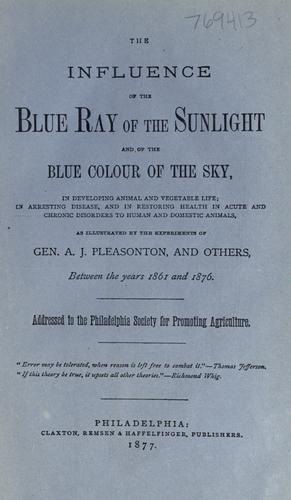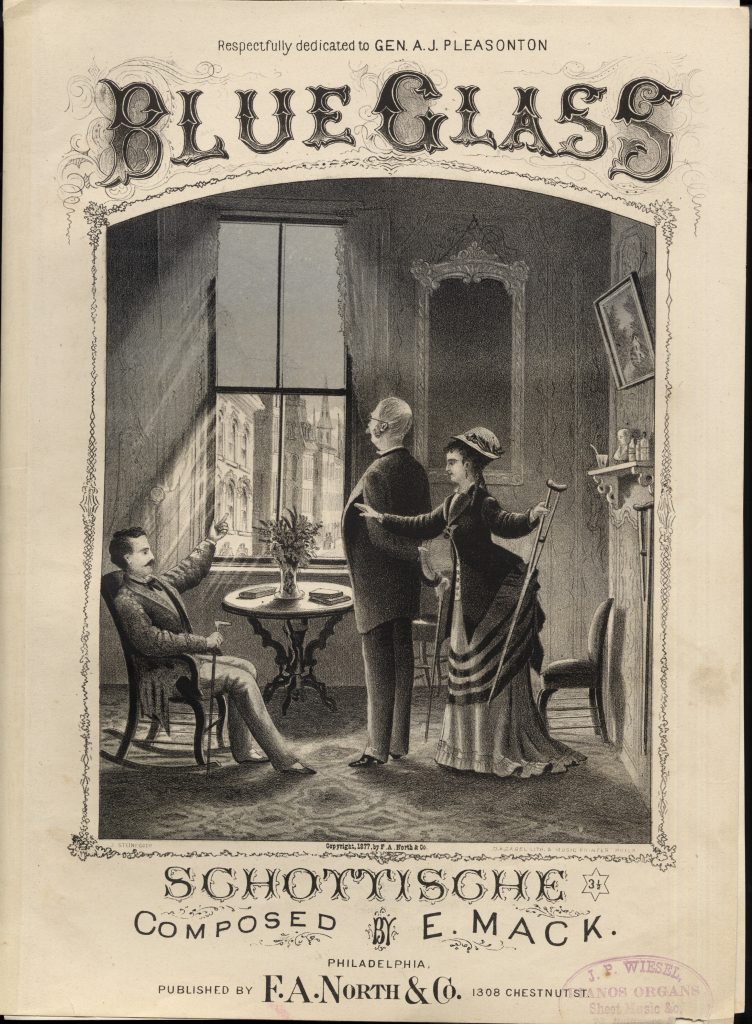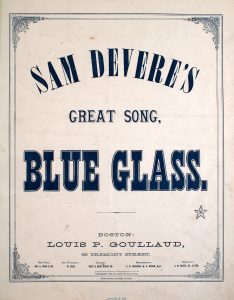As the curator of the Lester Levy Sheet Music Collection, a phrase I hear often is “I didn’t know sheet music could be used to study…”
Levy collected 30,000 songs over 50+ years not to perform, but to use as a lens for studying history. To make this easier, Levy organized his collection by subject, rather than title or composer. As a result, there are hundreds of unique subjects that can be used to filter the collection.
Therefore, I thought I’d take the opportunity to dive into some of the more fascinating, obscure, and strange subject headings in the collection. Each week, I’ll focus on a different subject, ranging from Napoleon Bonaparte to puppets to cannibalism (unfortunately, there’s no category for cannibalistic puppets resembling Napoleon Bonaparte. Yet.) For this inaugural week, I decided to do a deep-dive on blue glass, a strange chapter in the history of medicine.
While blue-light glasses have become increasingly popular lately, there was a brief period in the 19th century when blue light was a miracle cure-all. It all seemed to start with a lecture and subsequent book by retired General August J. Pleasanton in 1876, titled The Influence of the Blue Ray of the Sunlight and of the Blue Color of the Sky. The subtitle claims the color blue can promote animal and vegetable growth as well as treat disease in humans and animals. Doubling down on these claims, the entire book is written on blue paper, and includes some truly delightful excerpts from Pleasanton’s experimentation:
“If the barrow pig under the violet light had increased at the rate of increase of the barrow pig in the common pen, his weight on the 4th of March, 1870 would have been only 161 lbs. instead of his actual weight of 170 pounds.”
As the blue glass crazy swept the country, it found its way into popular music. The Blue Glass Schottische was published in Philadelphia, also in 1877, and dedicated to Pleasanton.
The cover appears to show a man with a cane, sitting in a rocking chair. His leg has been magically fixed by the presumably blue window to his left, as a nearby woman is holding his now unneeded crutch. A second man seems to stare at the window, enraptured by the blue glass’ power (it’s also possible that the standing man is the one who no longer requires the crutches). The song itself has no words, but is instead a dance, perhaps implying the healed man is now capable of dancing.
Another song, simply titled Blue Glass, was published in 1877 in Boston and distributed in New York, San Francisco, Chicago, Philadelphia, and Brooklyn.
The second verse claims: “I’ve got Blue Glass in my skylight, It keeps out the wind and the rain, We’ve got Blue Glass all over the house, and Blue Glass on the brain… Put a single baby in a Blue Glass cradle, it will turn it into a pair of twins.” The chorus follows: “Oh Blue Glass, Blue Glass, Great discovery sure; If you get a little sick, You can cure it very quick, By trying the Blue Glass cure.” The Library of Congress also has eleven songs about blue glass, all from the year 1877—it seems the excitement was intense but short-lived.
I can’t imagine General Pleasanton would be pleased to know that 150 years after his discovery, Rashida Jones would be appearing in commercials for glasses that filter out blue light. But, of all the outdated medical procedures from the 19th century we left behind, blue light is probably the most harmless. So, please take a few moments to gaze into the soul-healing blue square below before enjoying the rest of your Friday.
As the curator of the Lester Levy Sheet Music Collection, a phrase I hear often is “I didn’t know sheet music could be used to study…”
Levy collected 30,000 songs over 50+ years not to perform, but to use as a lens for studying history. To make this easier, Levy organized his collection by subject, rather than title or composer. As a result, there are hundreds of unique subjects that can be used to filter the collection. So, I thought I’d take the opportunity to dive into some of the more fascinating, obscure, and strange subject headings in the collection. Each week, I’ll focus on a different subject — stay tuned for more deep dives! You can view the entire digitized collection here.




